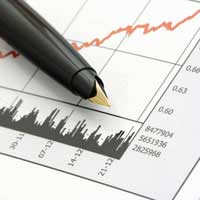How to Read a Profit and Loss Account

A profit and loss (P&L) account, also known as an income statement, is a financial record of a company’s income and expenditure over a particular period, typically a year. The so-called bottom line, appearing at the end and calculated as the total income minus the total expenditure, shows whether the business made a profit or a loss.
Does My Business Need One?
If your business is operated as a limited company, or as a partnership whose partners are limited companies, then it must have a P&L account drawn up every financial year.Other types of business are not legally obliged to do this. If you have a different type, these reports are still useful: they are useful management tools even if you do not publish them, they may simplify the process of completing your tax return, and your bank may ask you for three years’ accounts if you apply for a mortgage or other type of finance.
General Points
Three columns are necessary: the description of what is being recorded, expenses and income. Negative numbers are shown in parentheses: for example, a figure shown as (£10,000) in the Income column would represent a £10,000 loss.Income
There are two categories of income shown: sales (turnover) and other income.The “sales” category, also called turnover, shows the total income from the sale of goods or services before deducting any expenses. This will usually be the larger of the two income figures, since it represents income from the day-to-day trading of the company.
The “other income” category covers all income from any source other than direct sales, and covers things such as bank interest, rental income and money received from the sale of assets.
Cost of Sales
The cost of sales is the base cost of obtaining or creating the product sold by the company. These expenses must directly finance the product being sold – general operating expenses are covered later on. A service-only company usually records a zero cost of sales.Gross Profit
The gross profit, or gross margin, is calculated as sales income less the cost of sales. In a manufacturing company, it shows the mark-up made on those sales.Expenditure
Many expenses incurred by a company, although necessary for it to run, cannot be included in the cost of sales figure. Cost of sales is basically limited to what is spent on stock in retail, or the costs of raw materials, tooling and labour in manufacturing.All other allowable expenses reduce the operating profit but are outside the scope of the gross profit. They are broken down in categories.
The cost of capital items (such as premises or machinery) cannot be deducted in one go; instead, the cost must be spread across several years.
Calculating Tax and the Bottom Line
The operating profit is calculated by subtracting the allowable expenses from the gross profit. If any adjustments are necessary for tax (for example, adding back any expenses that are not allowable against tax) then these are made to create the taxable profit. This will be the amount used as a basis for calculating the tax that the company must pay.Once tax is deducted from this figure, what remains is the net profit. This is retained by the company, and it can either be reinvested or withdrawn by its shareholders as dividends.
- A Brief Overview of Business Taxes
- All About How VAT Works
- What you Need to Know About Setting Prices
- An Introduction to Double-Entry Bookkeeping
- All About Selling Your Business
- Valuing Your Business Explained
- Grants and Awards for Small Businesses
- All About Budgeting and Forecasting
- Why Cash Flow is More Important Than Profit
- Balancing Risk and Reward
- Sticking With it When Times are Hard
- Bootstrapping Your Small Business
- What is Venture Capital?
- All About Raising Finance


Re: All About How VAT Works
I have a limited company but don't sell any goods, i provide a service building train interiors working through agency's. would i benefit…
Re: Sole Trader, Partnership or Limited Company?
Glad to find this advice. Good but a little more detail as to the tax advantages in using a company. And does…
Re: Laws to Know About Before Starting a Business
Great Job! WOW! I love this site! It has great information on starting a new business!
Re: Ten Business Ideas That Failed, and Why
Interesting that many of the failed business ideas you cite were really innovators who didn't adapt as technology…